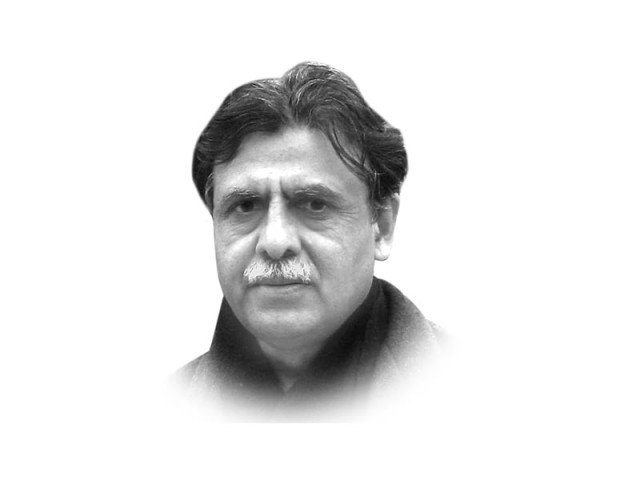Do we have a cultural policy?
Creative activity has a permeable effect on society and its future course

The writer is an author and a former interior secretary. He teaches at the Lahore University of Management Sciences
The first question that comes to mind is how best to perceive culture in our context. Culture defines a way of life based on a set of values, beliefs and practices woven around and by the environment we live in and transmitted to us through historical experience. There are overlaps, influencing the patterns originating from external sources. These are internalised and incubated before becoming a part of the indigenous culture. Acceptability of these sets of traits depends on the broader value system that shapes society. The country’s Constitution mandates the preservation of a distinct culture and practices, which imply accepting plurality in our cultural discourse. At a creative level, this finds expression in literature, art, music and crafts, which despite avowed diversity provide an abiding bond to the ever-evolving disparate elements of society. Creative activity in different forms, therefore, has a permeable effect on society and its future course. It is not only a product of immediate environs, it is also influenced by different social and transnational waves impinging on a particular space in a given time frame. Cultural policy, therefore, underlines a holistic framework that provides meaning and context to different cultural products with an effort to create closer connectivity within them. Devising a cultural policy is indeed an exacting task, which requires deep understanding and deft handling of these matters.
We continue to talk about our rich cultural heritage spanning over 5,000 years. Such a refrain at times raises eyebrows in some quarters. There is no point in making such claims unless we are ready to display a sense of ownership of this heritage. We cannot just pick and choose, and take ownership of bits and pieces of our history. Either we own or disown it in its entirety. Our rich literary and art history, revolving around oral traditions, dastaan and qissa goi, and print, visual and performing arts speak of a fairly advanced cultural development in the good old times. Princely states, patronising men of letters, singers, musicians and painters, made a noteworthy contribution to the promotion of different arts. When it came to music, the singing tradition of the famous gharanas also made a lasting contribution. A time came when radio became a repository of music, drama and entertainment.
Cultural policy in the present context should not only firm up views about cultural products of all forms, it should also take into account actions by the state, as well as corporate and the non-profit sectors and societal networks that impact cultural outcomes. This is a joint responsibility, which underlines the need for an institutional framework. This policy framework should not only formulate appropriate responses to emerging challenges, it should also continue to foster constant dialogue between various subcultures. There has to be a sense of empowerment and oneness, along with diversity. We are facing an existential threat, which has turned into an interminable war of attrition. There needs to be an urgency to have a well thought-out cultural policy, which could provide a resolve to stay steadfast at this defining moment. The hardware must have the requisite software to give lasting effects to the outcomes.
Literature, visual and performing arts, crafts and now the interactive media as repository of creative expressions present enormous opportunities of providing a deeper sense of purpose. We are at a threshold where we could harness the economic dividends of creative arts, which have a great potential to generate wealth and employability. Artistic creativity now must hone its entrepreneurial worth. There are strong indications of confluence of arts of all hues with growing business opportunities and new technologies. The advertising industry, for instance, is falling back on creative streams while in the case of interactive media, we see the video game industry and animation films capturing new markets. Architectural products are giving a fillip to real estate development. These linkages are inducing transformation in many allied fields. Television channels do not have to maintain a vast paraphernalia and a huge workforce. Production houses are coming up to lend an efficient hand and share the burden of television channels. Dubbed and imported plays are not only being aired during prime time hours, they are also promoting the art of translation while diffusing trends from abroad. A workable cultural policy should not only cater to the promotion of varied arts and skills, it should also make provision for the employability of those who are engaged in the supply chain network.
There is need to understand and tap the potential offered by the creative industry. This message needs to sink in with our top political brass. There appears to be a disconnect between the luminaries of arts, its protagonists and our decision-makers and resource allocators. We need to appreciate the efforts made by the private sector whether it is the National Academy of Performing Arts (NAPA) in Karachi or Rafi Pir theatre in Lahore. It should be noted here that NAPA did have the push of the state but it is the handiwork of professionals with proven credentials.
There is a need to come up with an institutional framework to bring more connectivity in our vast cultural space. Modern technology needs a closer interface with all traditional arts. While connecting creative fields with people, modern technology, business and investment, there is a need to take the corporate and non-profit sectors along for better outcomes. Public policy in Pakistan needs to come out of its conventional grooves to address wider challenges.
Published in The Express Tribune, March 8th, 2016.
Like Opinion & Editorial on Facebook, follow @ETOpEd on Twitter to receive all updates on all our daily pieces.













COMMENTS
Comments are moderated and generally will be posted if they are on-topic and not abusive.
For more information, please see our Comments FAQ